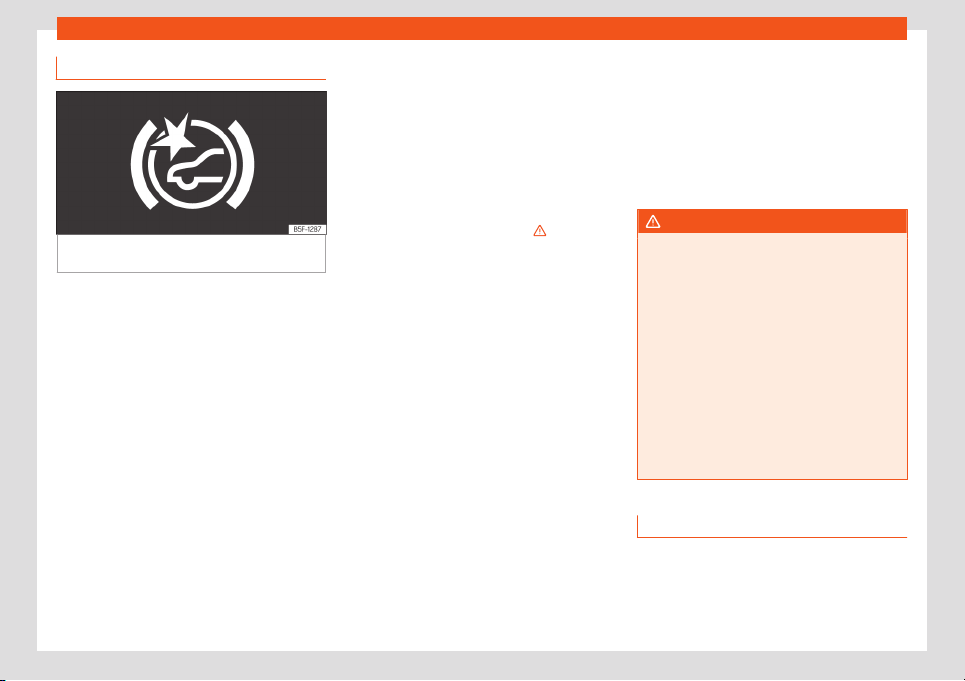Loading ...
Loading ...
Loading ...

Driver assistance systems
Warning levels and brake assist
Fig. 176 On the instrument panel display: ad-
vance w
arning indications.
Front Assist is active between 5 km/h (3 mph)
and 250 km/h (
155 mph). Depending on dif
-
ferent conditions (vehicle speed, speed and
type of object recognised, etc.), some of the
stages described below are omitted to opti-
mise the performance of the system.
Safety distance warning
If the system detects that you are driving too
close to the vehicle in front, it will warn the
driver with this indication on the instrument
panel display .
The timing of the warning varies depending
on driver behaviour, vehicle speed and rela-
tive speed between both.
The safety distance warning is active be-
tween approx. 65 km/h (40 mph) and 250
km/h (155 mph).
Advance warning
If the system detects a possible collision with
the vehicle in front, it alerts the driver by
means of an audible warning and an indica-
tion on the instrument panel display
›››
Fig. 176.
The warning moment varies depending on
the traffic situation and driver behaviour. At
the same time, the vehicle will prepare for a
possible emergency braking
›››
in Intro-
duction on page 2
44
.
When Front Assist is connected, the indica-
tions of other functions on the screen may be
hidden.
Critical warning
If the driver fails to react to the advance
warning, the system may actively intervene
in the brakes and generate a brief jolt to warn
the driver of the imminent danger of a colli-
sion.
Automatic braking
If the driver also fails to react to the critical
warning, the system may initiate independ-
ent emergency braking by progressively in-
creasing the braking in accordance with the
criticality of the situation.
Driver emergency braking assistance sys-
tem
If the driver, after the critical warning, starts
braking but the system detects that the brake
is not being applied with sufficient force, the
braking intensity will be increased. This brake
assist only occurs if the pedal is pressed firm-
ly.
WARNING
●
The system cannot pr
event a collision,
although it can significantly minimise the
consequences by reducing the speed and
the force of the impact.
●
When the Front Assist causes a braking,
the brake pedal is “harder”.
●
Automatic interventions by the Front As-
sist on the brakes may be interrupted by
pressing the accelerator or moving the
steering wheel.
●
The Front Assist may brake the vehicle
until it stops completely. However, the
brake system does not halt the vehicle per-
manently. Use the foot brake!
Pedestrian and cyclist recognition
The system recognises pedestrians and cy-
clists who tr
av
el in the same lane and direc-
tion and pedestrians and cyclists who trans-
versely cross the vehicle's path.
»
245
Loading ...
Loading ...
Loading ...